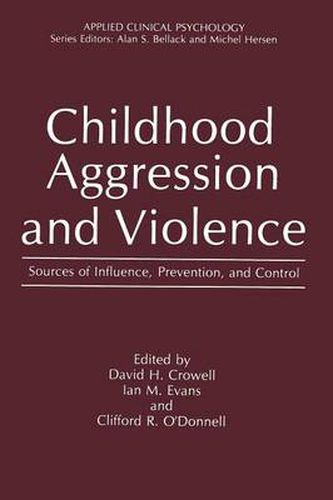Readings Newsletter
Become a Readings Member to make your shopping experience even easier.
Sign in or sign up for free!
You’re not far away from qualifying for FREE standard shipping within Australia
You’ve qualified for FREE standard shipping within Australia
The cart is loading…






This title is printed to order. This book may have been self-published. If so, we cannot guarantee the quality of the content. In the main most books will have gone through the editing process however some may not. We therefore suggest that you be aware of this before ordering this book. If in doubt check either the author or publisher’s details as we are unable to accept any returns unless they are faulty. Please contact us if you have any questions.
The conference on which this volume is based was one of a series of symposia initiated by the Department of Psychology at the University of Hawaii at Manoa on the theory and research surrounding topics of interest to the faculty and germane to the Hawaiian community. In order to encourage interaction around specific themes, the symposium series has assembled a small, select group of scholars to exchange knowledge, ideas, and enthusiasm with the resident faculty, students, and the community at large. The first two symposia concentrated on cross-cultural themes (Marsella, Tharp, & Ciborowski, 1979; Marsella, DeVos, & Hsu, 1985). The third one addressed a significant social problem: aggression and violence in children. At the time that our plan was being developed, Hawaii, along with mainland states, was experiencing or at least expressing widespread alarm over the involvement of children and youth in violent crime, in belligerence at school, as perpetrators of aggression at home, and as victims of physical abuse. This symposium was planned around a major area within the department, the Clinical Studies Program. The Clinical Studies Program has developed along two interrelated lines of concentration: one emphasized the foundation of clin cical psychology in basic science and the other expanded its purview into the broader community, covering prevention, systems change, and social networks.
$9.00 standard shipping within Australia
FREE standard shipping within Australia for orders over $100.00
Express & International shipping calculated at checkout
This title is printed to order. This book may have been self-published. If so, we cannot guarantee the quality of the content. In the main most books will have gone through the editing process however some may not. We therefore suggest that you be aware of this before ordering this book. If in doubt check either the author or publisher’s details as we are unable to accept any returns unless they are faulty. Please contact us if you have any questions.
The conference on which this volume is based was one of a series of symposia initiated by the Department of Psychology at the University of Hawaii at Manoa on the theory and research surrounding topics of interest to the faculty and germane to the Hawaiian community. In order to encourage interaction around specific themes, the symposium series has assembled a small, select group of scholars to exchange knowledge, ideas, and enthusiasm with the resident faculty, students, and the community at large. The first two symposia concentrated on cross-cultural themes (Marsella, Tharp, & Ciborowski, 1979; Marsella, DeVos, & Hsu, 1985). The third one addressed a significant social problem: aggression and violence in children. At the time that our plan was being developed, Hawaii, along with mainland states, was experiencing or at least expressing widespread alarm over the involvement of children and youth in violent crime, in belligerence at school, as perpetrators of aggression at home, and as victims of physical abuse. This symposium was planned around a major area within the department, the Clinical Studies Program. The Clinical Studies Program has developed along two interrelated lines of concentration: one emphasized the foundation of clin cical psychology in basic science and the other expanded its purview into the broader community, covering prevention, systems change, and social networks.